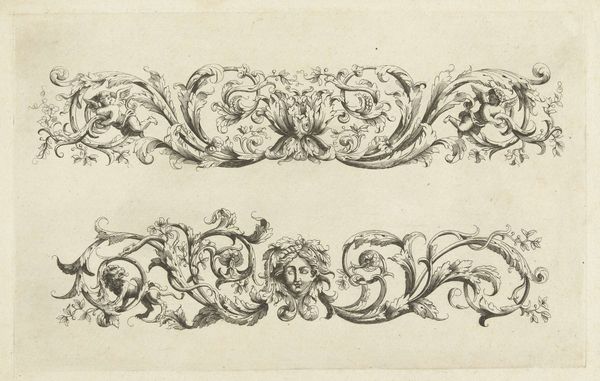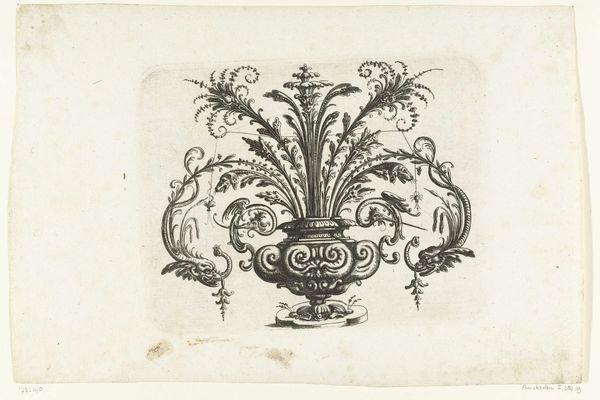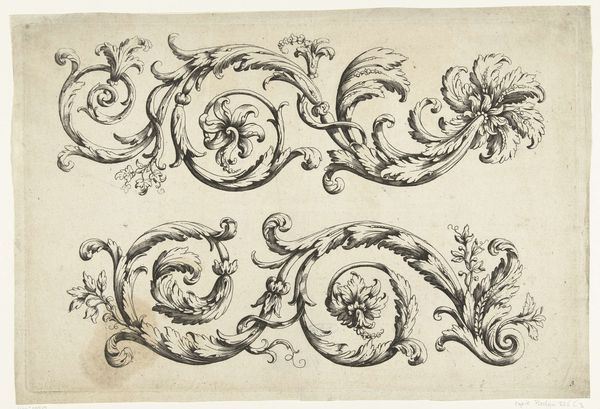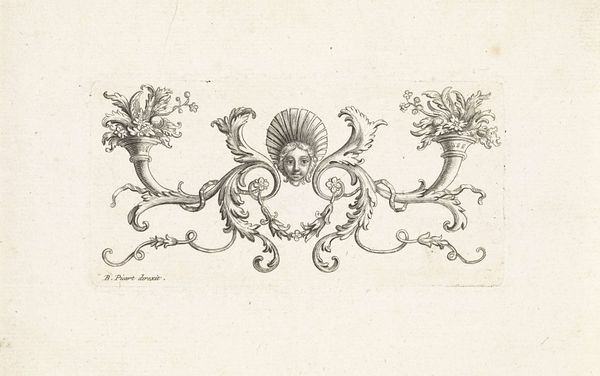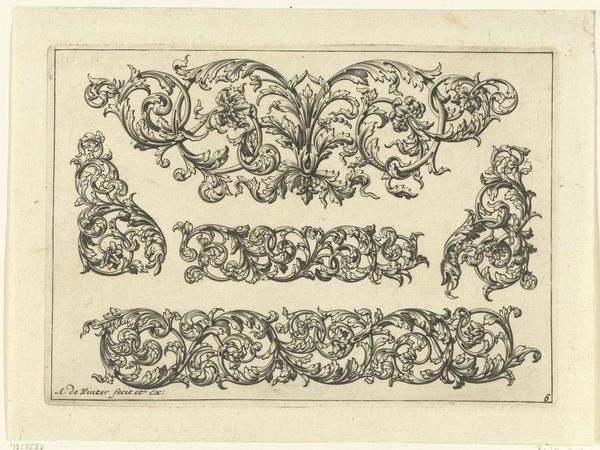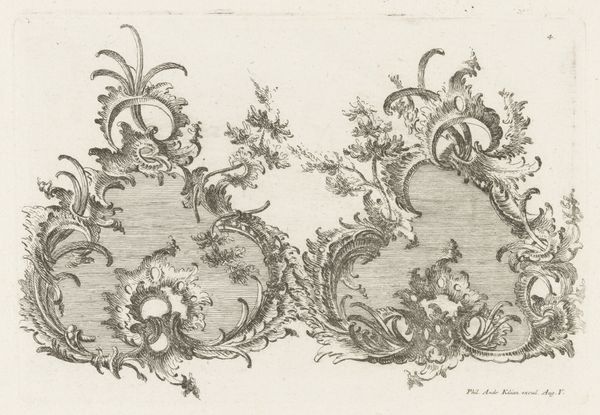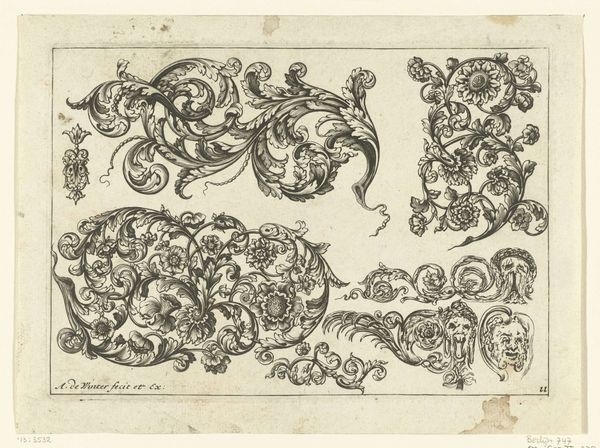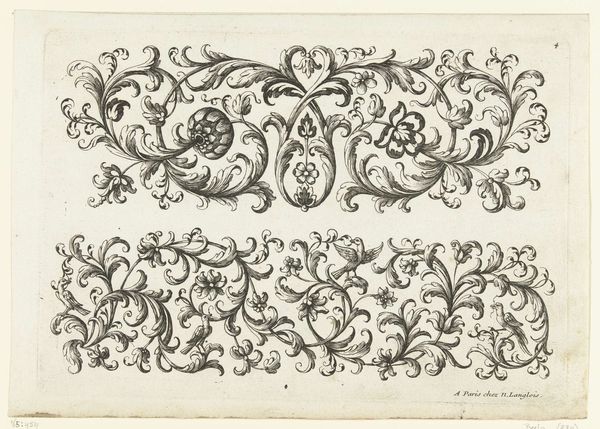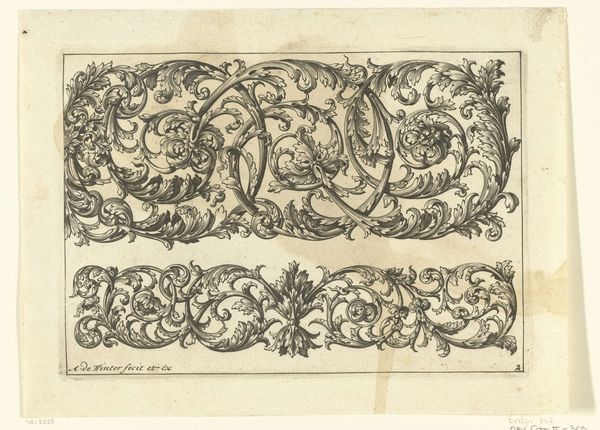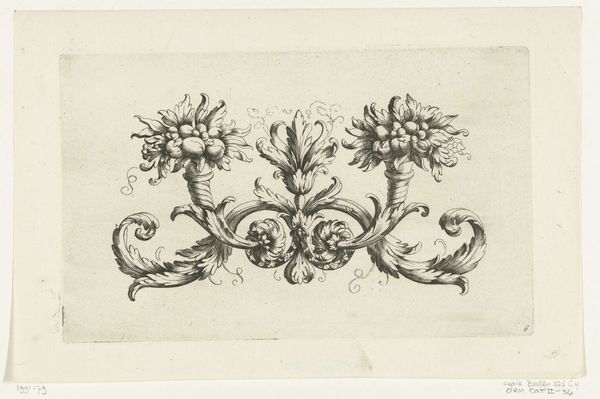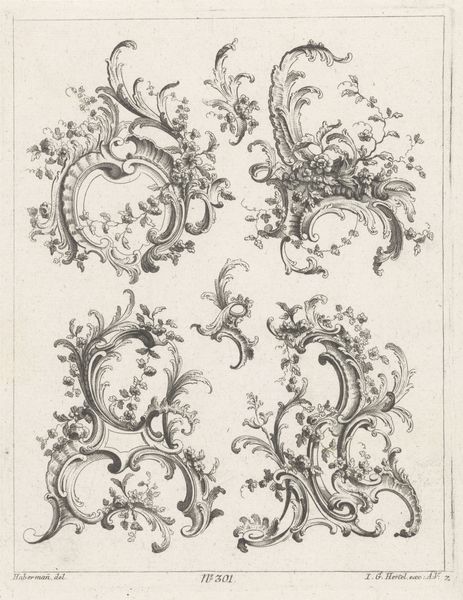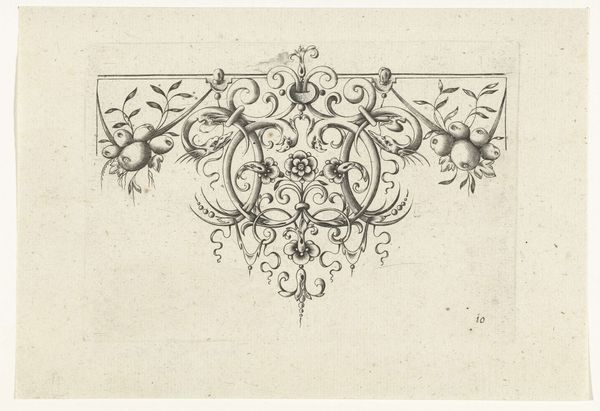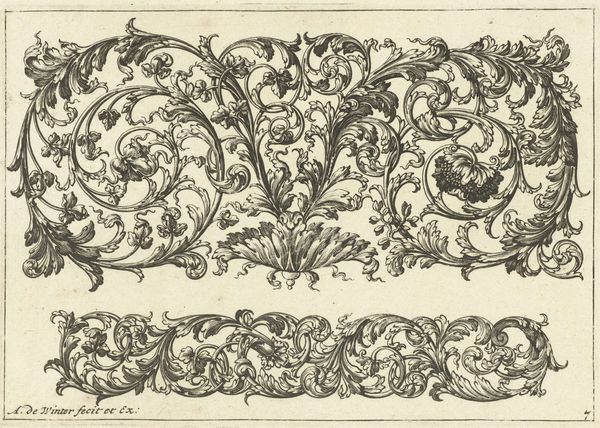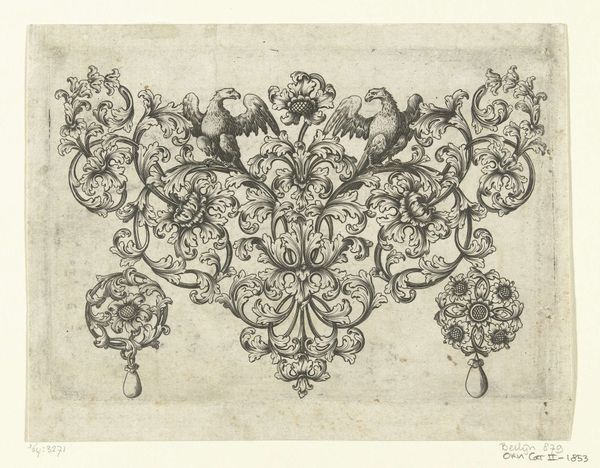
Bloemkelk waaruit twee bladranken ontspruiten c. 1670 - 1685
0:00
0:00
paulandrouetducerceau
Rijksmuseum
drawing, ink
#
drawing
#
baroque
#
ink
#
geometric
#
line
Dimensions: height 116 mm, width 250 mm
Copyright: Rijks Museum: Open Domain
Curator: Welcome. We're standing before "Bloemkelk waaruit twee bladranken ontspruiten," or "Flower calyx from which two leaf tendrils sprout," a drawing made with ink by Paul Androuet Ducerceau, around 1670-1685. Editor: Immediately, the balanced asymmetry strikes me. There’s a vibrant yet controlled energy, almost like a carefully choreographed dance of botanical forms frozen in ink. Curator: Ducerceau was working firmly within the Baroque period, and this piece really shows us the essence of that style, where line is expressive and the geometry subtly supports organic forms. Geometric symmetry and ornate vegetation combine here into an arabesque that transcends simple plant study. Editor: Precisely! This period—the latter half of the 17th century—is often overlooked when we talk about class and inequality. The visual lexicon of the era—expressed here as swirling botanical abundance—served to legitimize hierarchies, framing the aristocracy as intrinsically cultured and refined. These kinds of motifs, ostensibly celebrating nature, really uphold very specific social roles. Curator: The acanthus leaves, scrolls, and the flower calyx itself carry meaning that extends beyond the botanical. These forms resonate deeply with classical traditions; the language of architecture and ornament intertwines, signaling refinement, balance, and ultimately, established order. Editor: Exactly. Think about the context this design inhabits. These aren't just drawings. These were often models for luxury goods destined to embellish elite interiors or empower royal authority. Art then becomes a language that either challenges or supports this status quo, but even art that seems devoid of politics reflects cultural values. Curator: But looking past the hierarchical elements, it's worthwhile considering this design for the emotional comfort it offers. What is the function of repetition, what function does balance provide? The enduring power of symbols like these lies in their capacity to deliver something universally satisfying—a structured beauty. Editor: I concede that this design can, from one vantage, reflect an emotional resonance across generations, reflecting ideals of stability and controlled natural splendor. From my position, such stability is inevitably enjoyed unequally, making me reluctant to embrace this unqualified elegance. It prompts me to think critically, though, about the stories art and culture perpetuate through aesthetics. Curator: It's wonderful to think about that tension residing within one image! Editor: Absolutely. That’s the richness that makes this artwork continue to provoke inquiry.
Comments
No comments
Be the first to comment and join the conversation on the ultimate creative platform.
